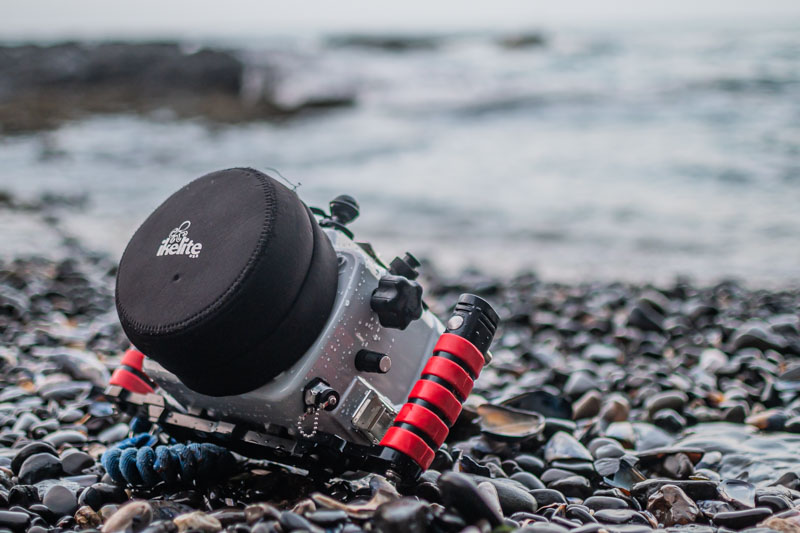Canon EOS R5 vs Canon EOS R6 for Underwater Photography
January 26th, 2021
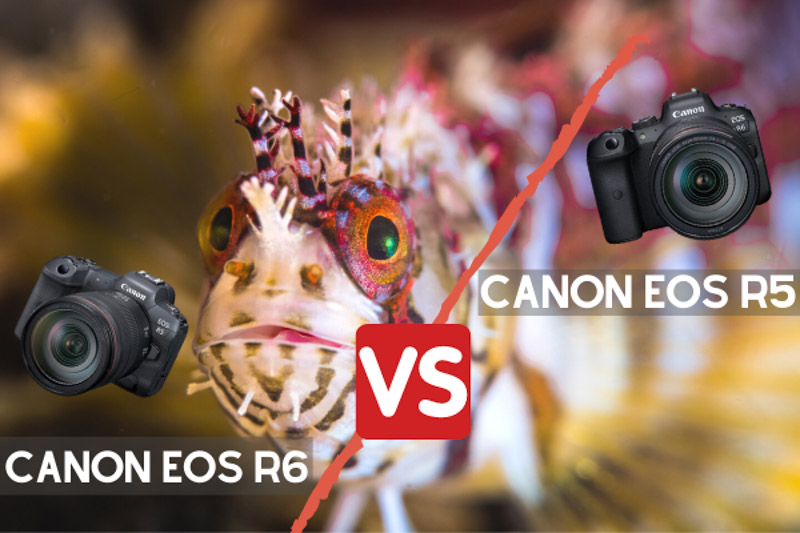
Canon EOS R5 vs Canon EOS R6
Price Points
Price is a great tool to use to understand the "class" or category and camera falls under. With a $3900 retail price, the Canon EOS R5 is clearly considered to be a high end professional model. While it is not a true flagship camera like the Canon 1DX Mark III, it is meant to appeal to professional photographers. The R5 is clearly priced so as not to be prohibitively priced for most professionals. With a $2500 retail price, the Canon EOS R6 is priced more for the prosumer/enthusiast market. However, it is priced about $800 higher than what would be expected from a true entry-level full frame camera. Therefore, the R6 is priced more for budget minded photographers that want the best performance from their camera body possible.
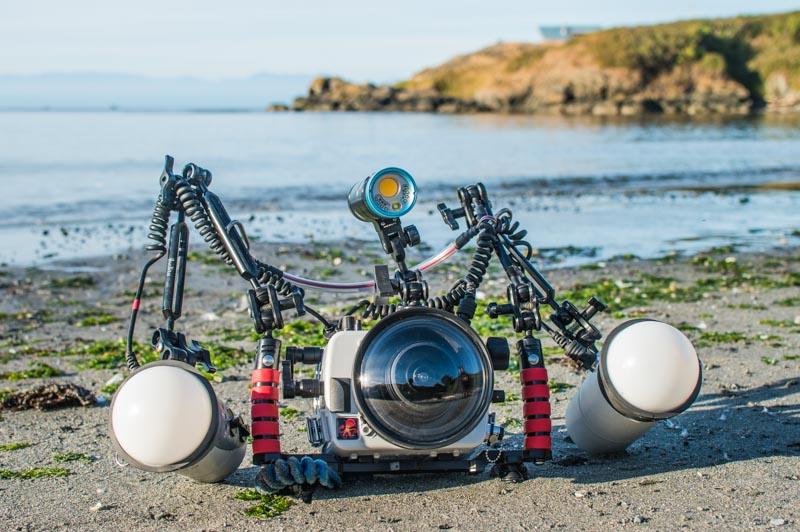
Canon EOS R5 in an Ikleite EOS R5 Housing during our field tests
What features do the R5 and the R6 share?
- Camera body build and ergonomics
- Came camera menu system and general menu functions
- Canon's first 5 axis In-Body Image-Stabilization (IBIS) system which works in conjunction with optical IS RF and EF lenses. Up to 8 stops of correction. This is our favorite feature on both cameras. No other camera manufacturer can currently match Canon's IBIS.
- 100% AF coverage of the sensor and autofocus system
- Animal Eye AF tracking
- Burst Shooting: 12fps mechanical shutter/20 fps electronic shutter
- Compatibility with RF lenses or EF lenses with EF-EOS R mount adapter
- 10-bit 4:2:2 internal video recording with C-Log
In our opinion, the Canon EOS R5 are most similar where it matters the most - their autofocus system and in-body image-stabilization system. These two technologies are currently unrivaled by Sony or Nikon and therefore make the R5/R6 the best choices for full-frame cameras on the market. We have been absolutely blown away by the power of Canon's IBIS system. We were easily able to capture stable handheld video with a 100mm macro lens, and we also managed to shoot photos down to 1/8th of a second underwater without any motion blur. Eye animal autofocus tracking was effective for both cameras about 20-60% of the time. It was most effective with a macro lens due to the closer field of view. Finally pelagic and quick-action wildlife photographers would be happy with the burst shooting speeds on either camera - the fastest of the full-frame category. Regarding the body, the cameras are almost identical with the same button and menu layouts.
Canon EOS R6 in an Ikleite EOS R6 Housing during our field tests
How are the R5 and the R6 different?
- EVF: This is one of the few physical differences between the two cameras - the R5 EVF has about 2 million more dots of resolution than the R6. By no means a deal breaker, but something to consider.
- Resolution: This is the most defining difference between the two cameras. The Canon R5 captures 45 megapixel still photos, and the Canon EOS R6 captures 20.1 megapixel still photos. Professionals are going to feel the pain of shooting with the R6's lower resolution if they do a lot of large prints or tight crops.
- Video Recording: The Canon EOS R5 is capable of recording video up to 8K/30p and 4K/120p, but the R6 can only record 4K/60p (which is still an excellent resolution and frame rate for most). Underwater videographers that need that extra stabilization will likely choose the R5.
- Recording file types: the Canon EOS R5 can record RAW video and the R6 cannot. Video shooters focused on post-processing and color grading will benefit from RAW video.
- Overheating: The Canon EOS R5 has more of a propensity to overheat than the R6.
- Low light performance: The R6 has larger pixels than the R5 due to its lower resolution sensor. This means it is a slightly better performer in lowlight situations. We were able to shoot underwater video up to ISO 12,800 and still had nice useable footage with the R6.
- Battery life: The R6 has a slightly better battery life than the R5. The R6 can easily do 3-4 dives. The R5 we might change the battery after 2. Maybe 3, but that would be pushing it.
The differences between the R5 and R6 are small but important. It really comes down to resolution and video features. How many pixels are you willing to give up for a more affordable price? That is the ultimate question.
Who should buy the Canon EOS R5?
- Photographers who want the best photo camera on the market
- Photographers that need high resolutions - particularly macro photographers who want to do tight crops
- Those where budget isn't a consideration
- Videographers that intend to do a lot of post-processing
- Photographers that produce large prints
- Hybrid photo and video shooters that need really good video options alongside the best photo camera
Sample Canon EOS R5 Underwater Photos and Videos
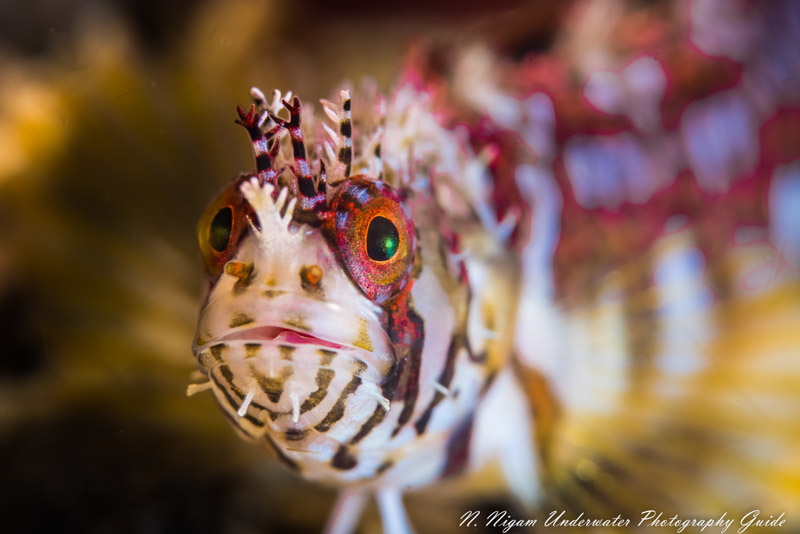
Spectacular resolution with the Canon EOS R5. Photo of a mosshead warbonnet captured with the Canon EOS R5 in an Ikelite housing, Canon 100 mm macro lens, dual Ikelite DS 161 strobes, Kraken +13 diopter, and Ikelite Canon TTL converter. f/16, 1/160, ISO 100
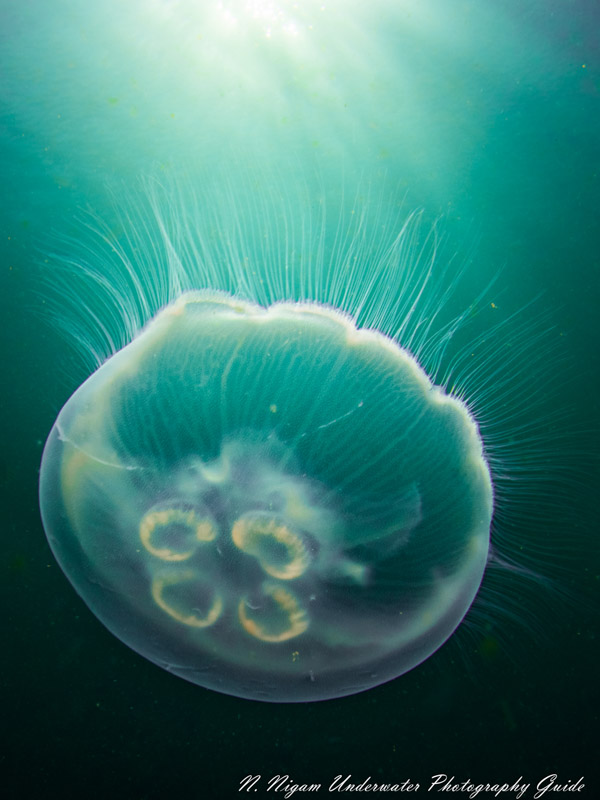
A moon jelly under the sun captured with the Canon EOS R5 in an Ikelite EOS R5 housing, Canon 8-15mm fisheye lens, dual Ikelite DS 161 strobes, and Ikelite Canon TTL converter. f/22, 1/160, ISO 100
Who should buy the Canon EOS R6?
- Photographers who are considering APS-C vs Full Frame cameras
- Semi-professional photographers and enthusiasts
- Wide angle underwater photographers
- Video shooters that don't do a lot of post processing and don't need 8K resolution
- Budget minded professionals
Sample Canon EOS R6 Underwater Photos and Videos
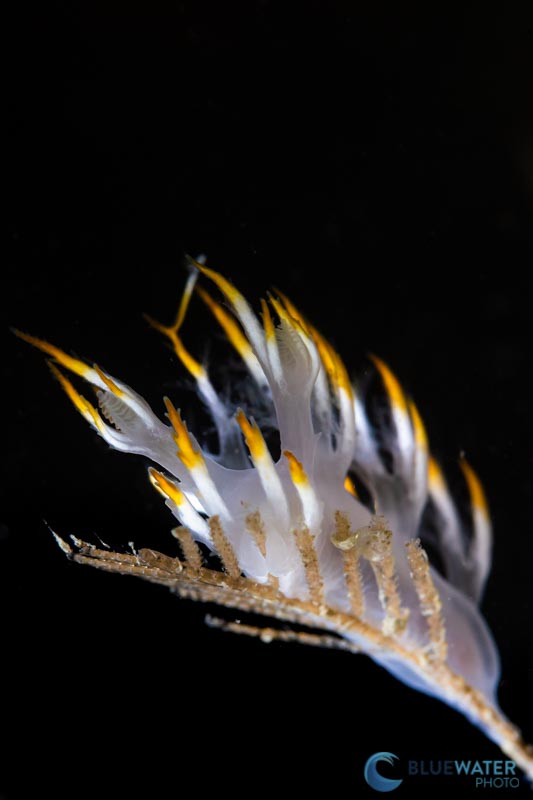
Nudibranchs can be tricky to shoot in high current. Autofocus tracking on the Canon EOS R6 helped us track the nudibranch's rhinophores and keep them in focus.1/160, f/11, ISO 200
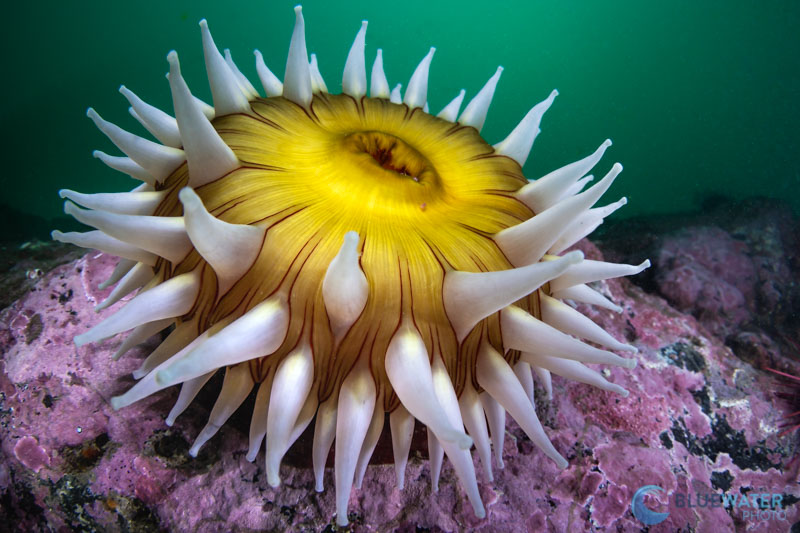
This image shows the beautiful image quality and dynamic range that the R6 is capable of capturing. This anemone was photographed with the Canon EOS R6 and Canon 8-15mm fisheye lens in an Ikelite EOS R6 housing. The image was slightly underexposed and adjusted in post processing. This image shows the quality of the details recovered. f/13, 1/60, ISO 320
Underwater Housing Options
Currently, and Ikelite and Nauticam housing option is out for both the Canon EOS R6 and R5. Aquatica will be shipping a housing for the EOS R5 soon. We anticipate additional housings from Aquatica, Isotta, and Sea & Sea. Contact sales@bluewaterphotostore.com for updates on housings.
Purchase a Canon EOS R5 underwater housing at Bluewater Photo:
Nauticam Canon EOS R5 Underwater Housing
Ikelite Canon EOS R5 Underwater Housing
Sea & Sea Canon EOS R5 Underwater Housing
Aquatica Canon EOS R5 Underwater Housing
Isotta Canon EOS R5 Underwater Housing
Check out our full Canon EOS R5 Underwater Housing Buyer's Guide
Purchase a Canon EOS R6 underwater housing at Bluewater Photo:
Nauticam Canon EOS R6 Underwater Housing
Ikelite Canon EOS R6 Underwater Housing
Sea & Sea Canon EOS R6 Underwater Housing
Aquatica Canon EOS R6 Underwater Housing
Isotta Canon EOS R6 Underwater Housing
Need help choosing a housing? Check out our Canon EOS R6 Underwater Housing Buyer's Guide
Conclusions
When it comes down to it, the choice between the Canon EOS R5 and R6 is fairly simple. If you want more resolution for both photo and video as well as better options for editing video during post processing, the Canon EOS R5 is the right camera for you. But you'll need to dig about $1400 for the body to get it. If you're willing to take lower resolution, but still professional quality photos and are fine with 4K video up to 60p (most would be!), then it can be beneficial to save a little money and stick the the R6. Either way, you can't go wrong. Both are fantastic cameras!


